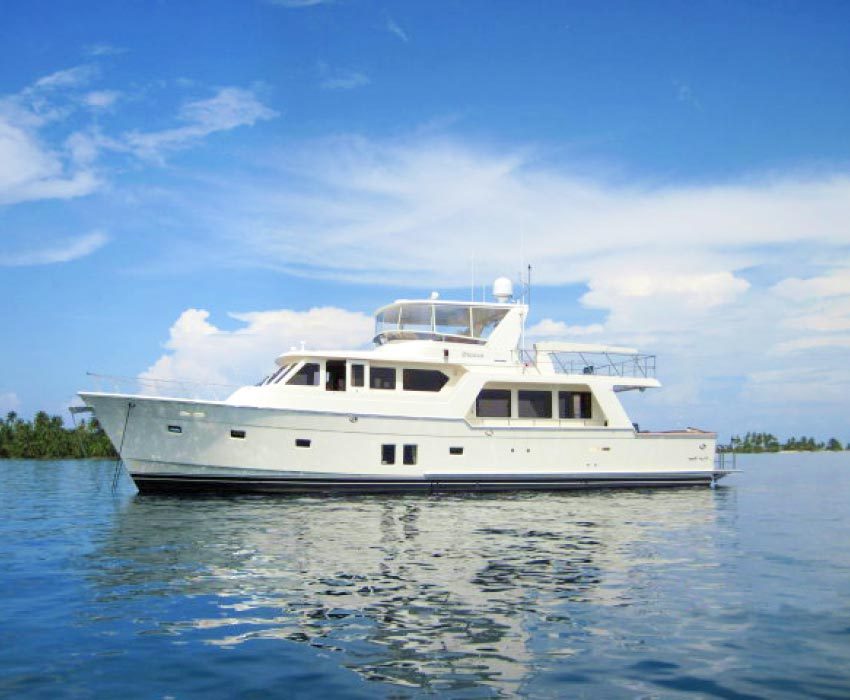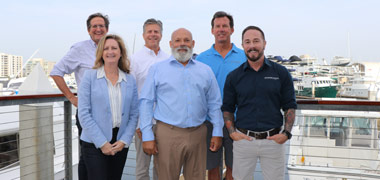
A yacht’s hull design will determine:
- If it will have a soft comfortable entry in head seas
- If it will have a gentle easy motion in a sea way
- If it will be stable with a gentle easy motion while at anchor
- If it will have sufficient speed to out run bad weather
- If it will have a “dry” ride with proper water deflection
- If it will be fuel efficient at cruise speeds
Each of these factors were the primary goals in William Crealock’s designs for Offshore Yachts. To successfully achieve these goals Mr. Crealock chose a semi displacement design that combines the best features of planing hulls and displacement hulls.





